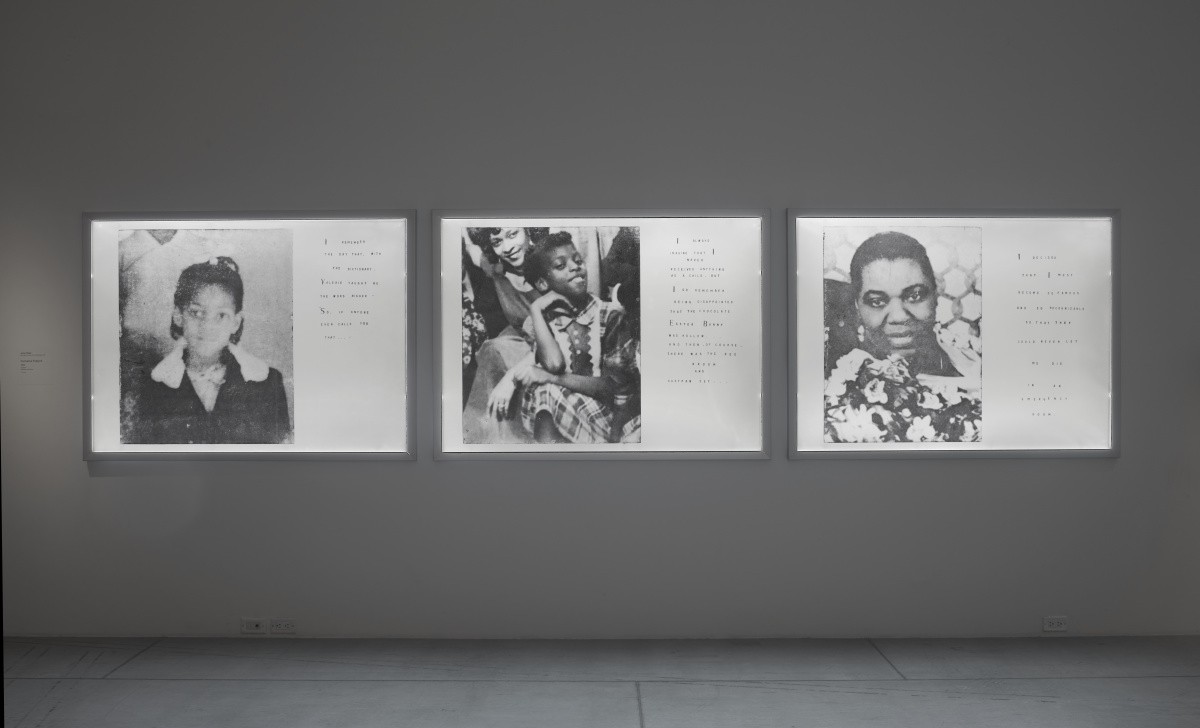ICYMI: Whispering with June Clark
In case you missed it, in 2018 we connected with renowned Toronto artist June Clark to learn more about her powerful series Whispering City.

June Clark, Formative Triptych, 1989. Three duratrans transparencies in lightboxes, 111.5 × 152.2 cm (43 7/8 × 59 15/16 in.) each. Collection of the Art Gallery of Ontario. Purchase with assistance from the Estate of P.J. Glasser, 2016. © June Clark
Inside the J.S. McLean Centre for Indigenous & Canadian Art is an exhibition of June Clark’s powerful work. Clark’s Formative Triptych (1989), featured in our 2016 exhibition Toronto: Tributes + Tributaries, 1971–1989, is now back on the walls, along with other exciting works from her prolific career.
We chatted with June to learn more about her series Whispering City and to find out what she’s working on now.
AGO: This exhibition includes two works from your series Whispering City. What’s the story behind these works?
Clark: Whispering City is a series about memory and amnesia. It's images paired with text, but the two elements are about 20 years apart. I came to Toronto abruptly – I was born and raised in Harlem, New York City, but I left because of the Vietnam War – and I missed home. In Toronto, I would go out and photograph the familiar: streetscapes, parades and people. The words came to me decades later when I revisited the photographs, and it made me understand why I had made these images in the first place. The text refers to moments from my childhood, or things my grandmothers, aunts or uncles would say when I was young.
AGO: Tell us about the amnesia element.
Clark: I have a sister who is 18 months younger than me, so we’re close and sort of like twins. I remember recalling an incident from childhood and being shocked that she remembered it differently. And that kind of thing happens all the time. These moments that you are so sure about can have a totally different interpretation from someone else’s perspective. Whispering City’s texts let me ‘fix’ the memory to an image that was personal to me. In some ways, it was coming to terms with these childhood memories. I even made the text using a child’s printing kit: you ink and apply each letter separately.
AGO: Whispering City’s images have a soft, fluid edge – the photographs are almost ghostly. How did you achieve that?
Clark: Each image has been fully etched on to the plate. The soft, fluid effect is achieved through the inking and wiping of the plate. (I only apply ink to certain areas of the plate.) When wiping the plate I get the effect of an image emerging and disappearing – a visual representation of a memory coming in and then fading.
AGO: What ideas would you want Torontonians to whisper to your grandchildren?
Clark: That they respect themselves and other people. That we should work to make our surroundings comfortable for all who walk our streets. We are all responsible to contribute to a good and safe environment.
AGO: This exhibition shows work from 1988 to 2007. But you are still making art. What’s next?
Clark: My new installation is entitled Unrequited Love. Throughout my practice, I have created variations on the American flag, and in 2014 as I was laboriously pulling threads on Moral Dis-engagement, I realized I had eight different forms of my flag. This installation uses all my flags, along with a recording of two of my grandchildren reciting The Pledge of Allegiance.
The American flag was something I was taught to love but it hasn’t loved me back. Growing up, we would pledge allegiance to the flag, and through this repetition, you learn to love the flag and you learn to respect it. Each class had a flag monitor. I have this vivid memory of our monitor accidentally letting the flag touch the floor and this collective gasp from the entire class. We were only in grade two when this happened.
Unrequited Love is dedicated to Colin Kaepernick and others who have taken a knee during the national anthem. People have twisted their demonstrations, which are about racial injustice in America, to be something about disrespecting a flag. Hence the title: Unrequited Love.
The installation of the AGO’s Indigenous and Canadian Collection is generously supported by:
Andrew & Marianne Guizzetti
Robert Harding & Angel Yang
The McLean Foundation
